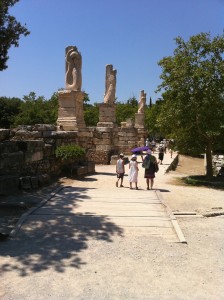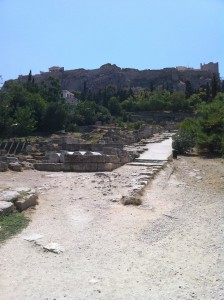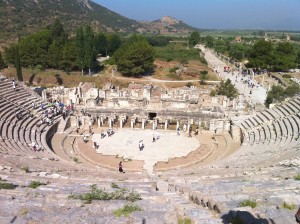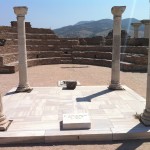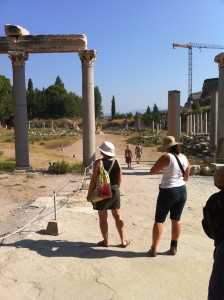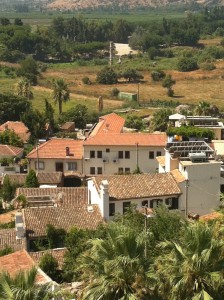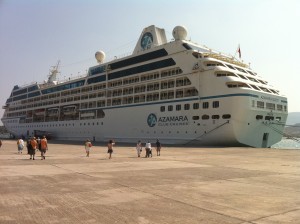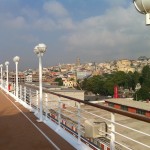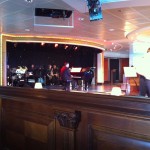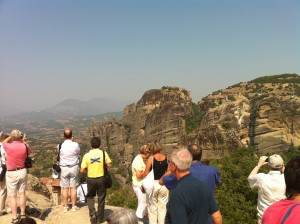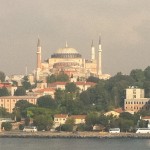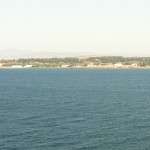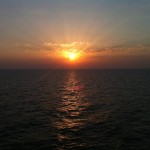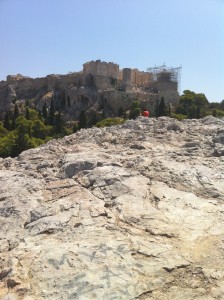
Today was a stellar day, which is unusual for last days of vacations. We tried to book a private tour guide for Athens because there was so much we wanted to see and only had the day. However, it was a religious holiday, and tour guides were scarce. As a result, it was going to cost us $650 for a guide and car service. So we decided to go it alone.
As it turned out, we saw everything we wanted to see, and, because it was a religious holiday, admission to every museum and site was free. We were able to walk everywhere, enjoyed a long lunch, wonderful lunch and did it all between 11:00 a.m. and 7:00 p.m. It helps to have a wife who is a saint. She didn’t feel well all day but rather than sit it out in the hotel she came out and hung in there all day. We are both glad she did because we shared one of the great tourist days of our lives together.
Here was our itinerary: the Plaka and Monastiraki, Hadrian’s Library, Roman Aerides Market, Ancient Agora, Museum of Ancient Agora, Areopagus, Acropolis, Parthenon, lunch, Floumoussou Etairias Square (shopping), Hadrian’s Arch, the Temple of Olympian Zeus, the National Garden, Byzantine & Christian Museum.
There were three highlights today. First was recreating Acts 17:16-34 by walking from the Ancient Agora (marketplace) up the path to the Areopagus and then walking up on to the Areopagus. The trip takes 15-20 minutes, which means Paul would have had some time to think about what he was going to say when he got there.
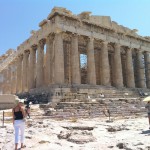
When he got there Paul didn’t just preach Jesus, he told these justices God did not dwell in temples made by man, a direct insult to their pagan religion. As Paul was telling them this, they would have been able to look right up and see the Parthenon—their most cherished pagan temple. It was pretty gutsy of Paul to say such things to the men who had the power to put him to death.
I took a picture looking up to the Parthenon from the top of the Areopagus so you could get the idea of the view the justices would have had while Paul was saying these things about their pagan religion. This is the sort of thing you realize when you see a place instead of just read about it. It’s a great reason to travel.
The second highlight was they Byzantine & Christian Museum. If there is a better museum in the world covering Byzantine life and art I can’t imagine what it is. If you have any interest in the Byzantines, this museum is a must-see.
The third and most important highlight was being able to share this day with my best friend and love-of-my-life. Most great things are better shared, and that is certainly true of travel. It’s even better when that person is learned, fun and loves Jesus, all of which is true of my wife. GS
